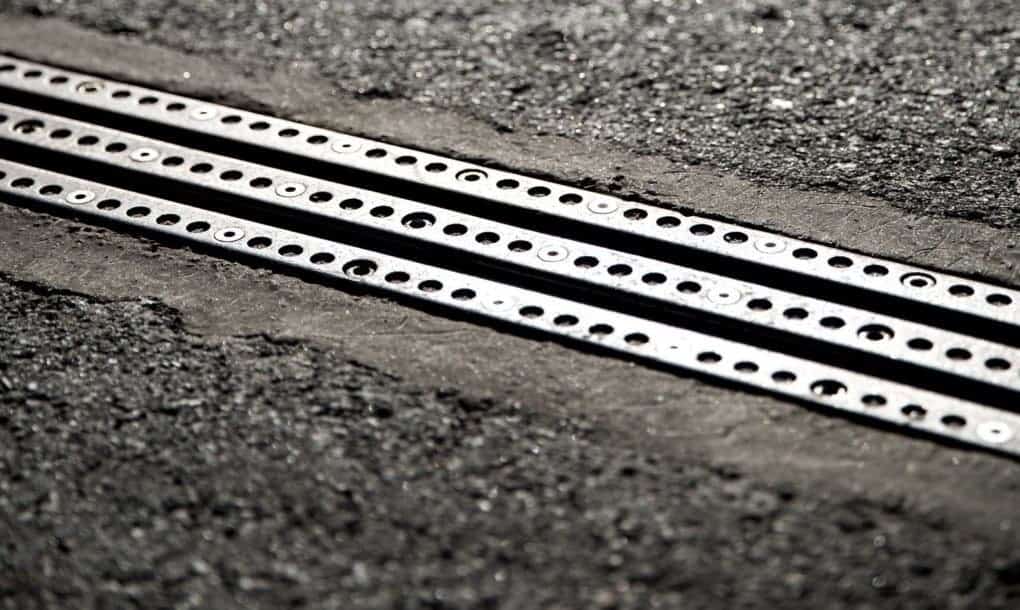One stretch of road outside Stockholm will recharge electric cars and trucks as they’re zipping along.

Image credits Erik Mårtensson / eRoadArlanda
Stockholm can now boast having the world’s first operational electrified road. While it’s quite short, linking Stockholm Arlanda airport to a nearby logistics site over a stretch of two kilometers, it is nevertheless an important step forward in Sweden‘s long-term energy strategy and its efforts to combat climate change.
The country has pledged to decouple completely from fossil fuels by 2030 — quite an impressive goal to set for ones’ self — the lion’s share of which are currently guzzled by the transport sector. This electrified road is Sweden’s proof-of-concept, aiming to show that e-vehicles can be used conveniently over long distances. Once expanded to other key infrastructure lines, such as highways and main roadways, the roads will ensure Swedes can charge their electric vehicles wherever they are — and ensure a smooth transition from combustion engines to electronic ones for residents and industry.
The road transfers electricity from an underground rail into the batteries of cars through a flexible arm attached to the charging vehicle. It might sound risky, but the team behind the project says it’s not any more dangerous than a bowl of meatballs with cranberry sauce.
“There is no electricity on the surface,” Hans Säll, chief executive of eRoadArlanda, the consortium behind the project, explained to the Guardian.
“There are two tracks, just like an outlet in the wall. Five or six centimeters down is where the electricity is. But if you flood the road with salt water, then we have found that the electricity level at the surface is just one volt. You could walk on it barefoot.”
Each new kilometer of electrified road currently costs roughly 1 million euros ($1.23 million) to install. Not exactly cheap (the World Bank estimated back in 2000 that one kilometer of new road costs around US$866,000 to install, so about 1/3 less), but its still a whopping 50 times cheaper than installing an overhead tram line over the same distance.

Image credits Erik Mårtensson / eRoadArlanda.
The e-roads are divided into 50 meter-long (164 feet) segments, which are individually powered — and only when a car is running on that segment. To keep extra safe, power will be cut when a vehicle stops.
With Sweeden currently maintaining about half a million kilometers of roadways (20,000 of which are highways), that would add up to a lot of euros. Luckily, as e-vehicle manufacturers have done such a wonderful job in battery technology one-upmanship lately, the Swedes don’t need to electrify everything — just the important bits.
“If we electrify 20,000 kilometers of highways that will definitely be enough,” Säll explained. “The distance between two highways is never more than 45 kilometers, and electric cars can already travel that distance without needing to be recharged.”
“Some believe it would be enough to electrify 5,000 kilometers.”
Another interesting feature of the e-road is its “dynamic charging” ability. In essence, the system can estimate how much energy each vehicle running on it consumes, meaning the costs can be debited per individual car or user. It also means that these cars can get away with smaller batteries (since there’s always a reliable supply of power close at hand) making them even more energy-efficient in the long run.
The government’s roads agency has already drafted a national map for future expansion, The Guardian adds.
The only question yet to be answered is whether Ikea will start shipping DYI stretches of electrified roads, with their customary excess of bolts in each package.






